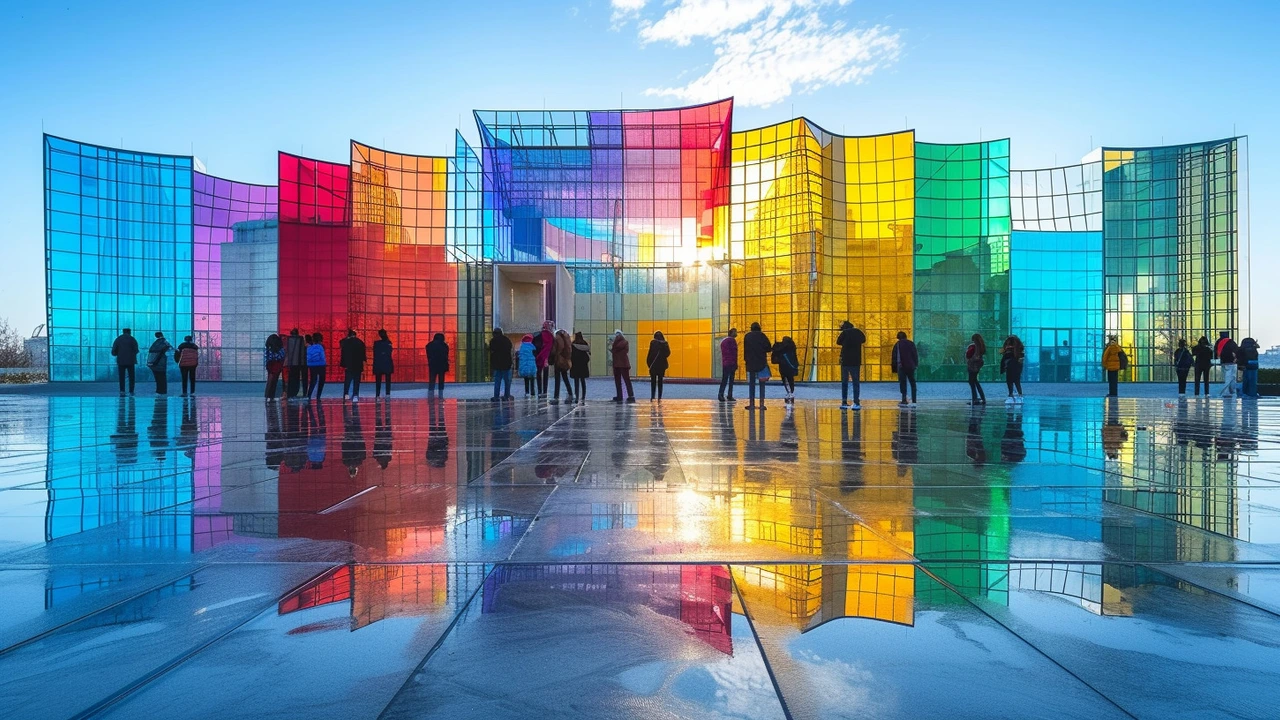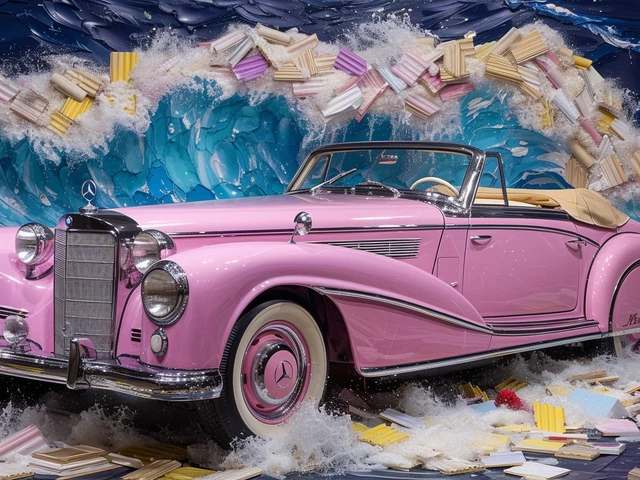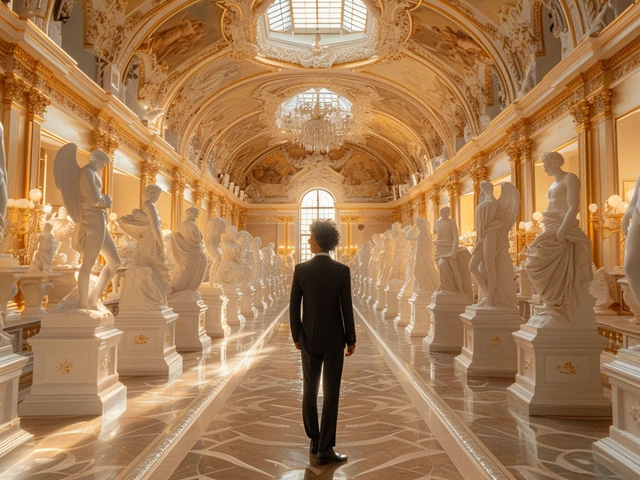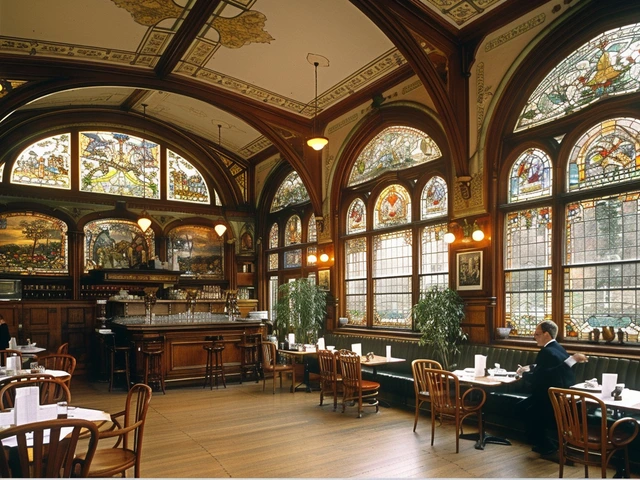The Genesis of De Stijl: A Symphonic Symphony of Lines and Colors
De Stijl, translated as 'The Style', emerged as a unique and influential art movement in the Netherlands around 1917. As someone who has always appreciated the beauty of simplicity and abstraction, I can't help but admire De Stijl's creative charm every time I encounter a piece crafted in this iconic style. Born from the desire to abandon tradition, this movement embraced new ideas of abstraction and universality. Artists who sympathized with the movement like Piet Mondrian and Theo van Doesburg wanted to create a new kind of art, one where simplistic visual composition could evoke profound messages.
Think about it. When you look at Mondrian's Composition II in Red, Blue, and Yellow, dont you feel a sense of balance, a harmony between contrasting elements? Isn't it amazing how these artists could express complex ideas using just simple shapes and primary colors? It's like watching a symphony unfold visually apart from its usual auditory form! It is this fascinatingly paradoxical simplicity that makes De Stijl so deeply moving and memorable. I remember how my spouse, Damian, and I spent an entire afternoon just staring at Mondrian's works in the Museum of Modern Art, getting lost in the narratives woven by rectangles and squares.
Shaping Modern Architecture: De Stijl's Architectural Legacy
De Stijl's influence, however, goes beyond canvas and paint, creating intriguing ripples in the field of architecture. The movement sought to erase the borders between visual arts, architecture, and decorative arts, and aspired to create a unifying artistic language. Architects like Gerrit Rietveld and J.J.P Oud were stirred by these abstract ideas and transformed them into a 'living' reality. The most iconic of these creations might be Rietveld's Schröder House; a building that stands as a poetic three-dimensional interpretation of De Stijl's visual language.
Have you ever had the chance to visit the Schröder House? Damian and I did, and let me tell you, its geometric compositions are even more impressive in person. Each room in the house doubles or triples as a dining room, studio, or bedroom depending upon how you move the walls and furniture. The house is a living embodiment of De Stijl's ideal for harmonization—simply stunning!
De Stijl and The Evolution of Graphic Design
Walking into a conversation about De Stijl without mentioning its omnipresent influence on graphic design would definitely be an incomplete one. The dynamic simplicity of this art movement has left an indelible mark on the fabric of modern graphic design, inspiring minimalist designs and geometric aesthetics in various contexts such as logo, poster, and even web design. Just think about the uncomplicated logo design of Apple or Google. Can't you see a touch of De Stijl's principles there?
When we started developing the identity and online presence for our art collective, Damian and I discussed the idea of paying tribute to De Stijl in our design. After all, what better way to honor the universality of art than by incorporating an art style that sought for exactly this?
The Echo of De Stijl in Furniture and Fashion
De Stijl's emphasis on functionality and minimal aesthetics found a comfortable home in the realms of furniture design and fashion. Gerrit Rietveld's famous Red and Blue Chair epitomizes the movement's perspective on functional art, reducing the chair design to its basic elements and decorating it in primary colors.
On the fashion front, Yves Saint Laurent’s 1965 Mondrian Collection is an iconic blend of art and fashion where the designer translated the De Stijl aesthetic into wearable art. Imagine walking around in a Mondrian painting! Does it get any more fabulous than that?
Deciphering De Stijl: The Psychology Behind The Style
Many perceive De Stijl's much-loved aesthetics as cold and impersonal due to their precision and austere lines. However, there is an unexpected warmth and a sense of universal harmony in this movement's abstraction. De Stijl art pieces are never chaotic nor cluttered; they act as soothing balms to the eyes that are tired of the visual noise we are often subjected to.
Perhaps this satisfying simplicity and orderliness could be rooted in our inherent longing for clarity and resolution. We humans are, after all, pattern-seeking creatures. And De Stijl, with its harmonious geometric patterns and neat division of space and color, appeals directly to this intrinsic quest of ours.
The Timeless Influence of De Stijl: A Movement That Still Reverberates
Even after a century, the resonance of De Stijl art movement continues to be felt across various creative disciplines. It's fascinating to see how an art style born out of a tiny European nation could touch almost every corner of global art and design. Whether you're flipping through a fashion magazine, admiring a minimalist logo or walking into a modern architectural marvel, there is a good chance you'll spot fragments of De Stijl hiding in these facets of everyday life.
Remember when I mentioned how Damian and I spent an afternoon immersed in Mondrian's art? That trip to the museum happened fifteen years ago, yet the vivid memory of that day, and the deep impression that De Stijl's quiet simplicity left on me, still lingers. That's the magic of De Stijl. It's more than just a style or a movement. It's an enduring legacy, a revolution in perceptions, a silent roar that continuously encourages us to appreciate the beauty in simplicity and seek harmonic balance in abstraction.



